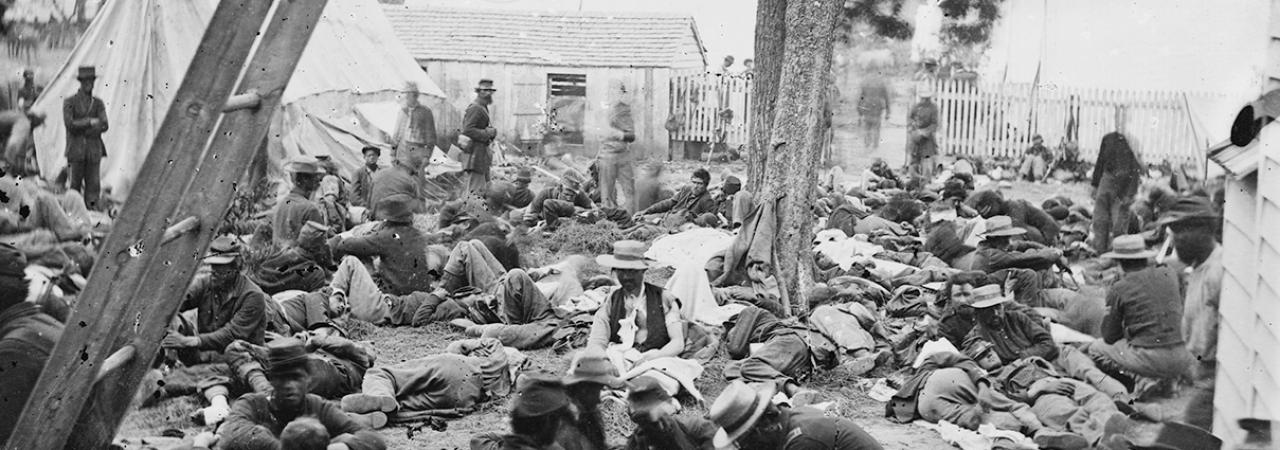
Wounded at Savage's Station. This Union hospital was overrun by Confederate troops the day after this image was captured.
In July 1862, Mathew B. Brady put his photographs of the recent Peninsula Campaign on display at his gallery at Broadway and West 10th Street in New York City. The exhibition caused something of a sensation.
The New York Evening Post reported, “The wonderful series of pictures he there exhibits are certainly foremost among the triumphs of photographic art. His artists have followed our army from Bull Run to Richmond, and at the recent retreat to the James River one of them lost his photographic apparatus. They have taken pictures of the principal battlefields and officers and incidents of the war in Virginia; and these pictures, neatly mounted and disposed on screens, are now on exhibition at Brady’s.”

Looking closely at the images or thumbing through the catalog, the visitor might have noticed four images that had date-specific captions under the heading, “Near Savage Station.” Each referenced the Battle of Gaines’ Mill on June 27, 1862. To a contemporary viewer following current events, the mention of Savage’s Station and Gaines’ Mill together would have recalled the twin disasters that heralded McClellan’s “change of base,” or, more correctly, his retreat to the James River.
The most evocative of these photographs, entitled “Wounded at Savage Station, after the Battle of 27th June, 1862” has caught the eye of viewers and publishers ever since. It is a singular image — taken during an active campaign — of a site that would be overrun and captured by Confederates the very next day. No other image up to that time had captured such immediacy, or told such a story.
James F. Gibson, a photographer for Mathew Brady’s firm, was probably just as surprised by the Confederate offensive north of the Chickahominy River, as the Union army was. He had been waiting weeks for something to happen so that the great conclusion to the rebellion might be photographed. He had busied himself capturing images of the battlefield at Seven Pines and groupings of officers.
Now, and quite suddenly, Union soldiers began streaming back to the main supply depot at Savage’s Station — wounded men, an army in retreat. With no way to access the battlefields themselves, Gibson did what he could: he aimed his camera at a group of wounded soldiers near the Savage House and exposed a plate.
An officer is seen tending to a wounded man. A sergeant is seen hovering over one of his men. Other soldiers represent the human wreckage of the battle of Gaines’ Mill, fought the day before.
Those wearing straw hats are easily identifiable as members of the 16th New York Infantry, a unit made up of men from upstate New York. Their colonel’s wife had provided the regiment with straw hats in early June. This regiment had just received its baptism of fire at Gaines’ Mill and suffered more than 200 casualties.
Though unknown to the photographer, the next day this position was overrun and captured by the Confederates after the Battle of Savage’s Station. Most of the men shown here made it to Richmond, though not in the way they had hoped. Instead of triumphant conquering heroes, they were prisoners of war.
By the end of November, we must come up with $501,000 to make our next payment and purchase an additional 1.2-acre tract at Gaines’ Mill Cold Harbor...
Related Battles
6,800
8,700


